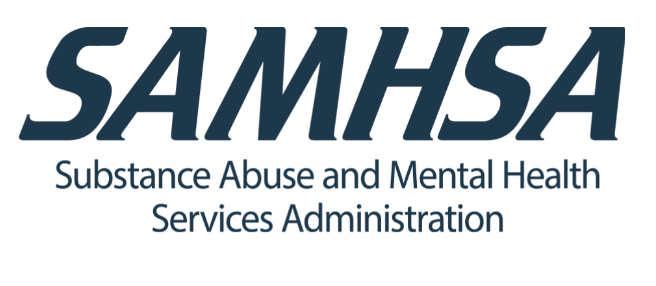What Is Drug Rehab Like in Los Angeles

What Does Drug Rehab Entail?
Struggling with drug and alcohol addiction is difficult and taking the steps toward addiction recovery through drug rehab can be even more challenging. You may be ready to get the help needed to take back control of your life but are feeling apprehensive about what you can expect. Often, an individual’s perception of drug and alcohol rehab centers is based on depictions in movies and TV shows. Based on these media depictions, it is easy to imagine that treatment facilities are sterile, cold places filled with angry people who do not want to be there. However, real-world drug rehabs are far from that image. So, what is drug rehab like?
The first thing you should know about drug and alcohol rehab is that no two treatment facilities, programs, or experiences are the same. Addiction affects each person differently and successful recovery requires personalized treatment plans and programs. With over 14,000 treatment centers in the US, thousands of different environments and facilities will also offer a variety of treatment programs within their facility.

The two main types of rehab facilities are public and private rehabs. Public rehab facilities are usually free and run by the state. They help provide access to those who do not have health insurance or financial means to pay for rehab. However, state-run drug and alcohol rehabs are in high demand for their services and often have a long waitlist. They also limit the type of treatment provided which tends to have more cookie-cutter programs with little room for customized treatment. Compared to private treatment facilities, public addiction treatment centers do not provide much in the way of amenities, outdoor recreation, or comfortable living arrangements.
In contrast to public treatment centers, private rehabs charge more for their services and tend to have a higher quality of care. Every private rehab center will vary in price depending on location, size, and amenities provided. The biggest difference is the guest experience. Private treatment centers are less crowded and may have private or semi-private residences, outdoor facilities, nutritious and tasty meals, and therapies, including holistic treatments. More treatments available will allow private facilities to create customized treatment plans which is the best chance at long-term recovery. Added amenities and comfortable residences in luxury facility centers often help increase patient retention rates, improving recovery outcomes. Holistic treatment methods that address the body, mind, and spirit in relation to addiction also result in higher success rates.
While every treatment facility is different, you can generally expect comfortable accommodations, nutritious meals, and individualized treatment plans. Treatment programs will also differ in intensity from inpatient treatment programs and outpatient programs. Various addiction treatments and services will make up your recovery program to address the root cause of your unique case with addiction. All programs begin with a thorough assessment to determine your addiction recovery needs and if dual diagnosis treatment is needed, which is a type of program that simultaneously treats co-occurring disorders such as anxiety and depression.
The biggest bulk of treatment plans will include individual therapy and group counseling. You can also expect certain services such as help with court case filings, vocational and life skills training, and off-site activities. Some addiction therapies and treatments which will make up your time in rehab include:
- Cognitive behavioral therapy
- Dialectical behavioral therapy
- 12 step programming
- Group therapy
- Family education and counseling
- Anger management
- Experiential therapy
- Relapse prevention
- Life skill training
- Vocational skills training
- Nutritional counseling
- Exercise classes and gym time
- Yoga and meditation
- Aftercare planning
- Medication-assisted treatment
Choosing Between Outpatient and Inpatient Drug Rehab in Los Angeles
The two main categories of rehab programs within private and luxury centers are inpatient and outpatient. These programs are best used as a step-down system and complement one another greatly. However, some people choose to do only one or the other. Both options offer effective treatment methods when they are a good fit and a patient may respond better to one treatment option than the other. Here we will go through what each program is like plus the pros and cons of each so you can make an informed decision on your recovery program needs.
What is drug rehab like in residential inpatient treatment? The most defining characteristic of inpatient treatment for addiction is that you will live at the treatment facility full-time while completing the program. These programs are the most intensive form of rehab and can help any addiction severity but are always recommended for those with severe addictions.

Pros of inpatient rehab:
- Medically-Supervised Detox. When attempting to stop alcohol and drug abuse, often the person will experience intense withdrawals and cravings which can lead to an early relapse. Some substances may even have dangerous withdrawal symptoms which can be life-threatening or lethal. Inpatient treatment can include medically-supervised detox as its first step towards recovery which includes around-the-clock care from a team of doctors and nurses and medication-assisted treatment to ease withdrawals and cravings. Medical detox not only ensures your safety and comfort through the withdrawal process, but it also guarantees you complete the process. You will continue to have access to 24/7 care from counselors and the medical team throughout the inpatient program as well.
- Offers An Immersive Experience. One of the greatest advantages of inpatient treatment for your recovery is that you will spend the entire day committed to your recovery program. Patients will have the opportunity not only to participate in several addiction therapies a day but the rest of their day will also be dedicated to recovery. For example, you will live with others who are on a similar path to sobriety as you which helps motivate your recovery process. Peers can provide mutual support, create lifelong friendships, and work through several stages of recovery together.
- Provides Highly Structured Days. Your daily schedule will be highly structured with set times for various therapies, mealtimes, wake and sleep times, and personal time. This structure can help patients develop discipline and a routine that will benefit long-term recovery. It also helps patients keep their minds busy and away from cravings.
- Patients Remove Themselves from Outside Stressors, Triggers, and Influences. Another big advantage of residential inpatient drug rehab is that patients can completely remove themselves from the possibility of relapse. Without outside distractions, patients can truly focus on themselves and their recovery. They can dive deep into the root cause of their addiction and work closely with their therapist to work through co-occurring disorders such as PTSD, depression, anxiety, and bipolar disorder as well.
Cons of Inpatient Rehab:
- Inpatient Treatment is More Expensive. Depending on the treatment facility, residential inpatient treatment can be quite expensive. The cost of room and board plus many treatments and therapies can increase the price. Also, health insurance plans may not cover all inpatient treatment, which must come out of pocket. However, it is important to remember that inpatient treatment is often necessary for severe addictions and is a valuable investment in yourself.
- Patients Need to Put Their Lives on Hold. Patients cannot come and go as they please. They will need to spend 24/7 at the treatment facility for an extended period of time. This means they have to put their work on hold, find arrangements for children, the elderly, or pets while they are away, and put everything else about their lives on hold.
- Difficult Transition Back to the Real World. While sobriety in inpatient care is easy, returning to the real world can be overwhelming without enough support through outpatient and aftercare programs. Many find it difficult to apply everything they learned in rehab to the real world when just being thrown back in, which can lead to an early relapse.
What is drug rehab like in outpatient treatment? Outpatient rehab programs will allow you to live at home or in a sober living facility, so you can come and go from the facility as you please. There are several levels of care within outpatient rehab with varying levels of flexibility. Outpatient rehab is the best fit for highly motivated people with mild to moderate addiction, a stable, drug-free home environment, and a supportive network of loved ones.
Pros of Outpatient Rehab:
- Ability to Continue Going to School or Work While in Rehab. Some outpatient programs like intensive outpatient treatment can provide enough flexibility to allow one to continue going to work or school. Individuals who struggle with substance use disorders often continue to hold stable jobs and do well in school. Outpatient rehab can eliminate the obstacle of taking an extended leave from school or work to attend rehab.
- Less Costly. Without room and board, outpatient programs will cost significantly less and will likely be entirely covered by health insurance plans. Individuals paying out of pocket may find outpatient costs to fit their budgets more easily as well.
- Easy Transition into the Real World. Outpatient programs can help patients transition their knowledge to the real world more easily. Patients will not suddenly be thrown into the deep end of the real world. A slow transition into the real world with enough support from peers and counselors will reduce stress and the likelihood of relapse soon after completing rehab.
- Provides Real World Experience. Patients will experience real-world problems and triggers and they can apply what they have learned in rehab in real-time. For some, this is a better learning experience and helps them retain skills and tools for longer.
- Continued Support from Loved Ones. Outpatient treatment does not separate you from your loved ones, which can be your greatest support network. Outpatient programs like partial hospitalization programs will provide intensive programs but allow you to go home to your family at the end of the day.
- Ability to Continue Taking Care of Home Responsibilities. Patients can continue caring for dependents like small children, elderly or disabled relatives, and even pets while in recovery. They do not need to make a whole plan on how their bills will get paid or take care of their homes while they are away.
Cons of Outpatient Rehab:
- Increased Risk of Relapse. Inpatient treatment provides a safe, drug and alcohol-free bubble where you have basically zero chances of relapses. Continued access to the real world may create temptations and the ability to use it again.
- Lack of 24-Hour Care. Outside of treatment hours, you may be completely on your own. Unlike inpatient treatment, you will not have access to counselors in the middle of the night when you come up with a revelation about your addiction and need to work through it.
- Continued Exposure to Triggers and Stressors. Patients will also continue to experience stressors and triggers in their real life, which may take focus away from their recovery. They may not dedicate as much time or effort to working on themselves as to inpatient treatment.
See what the Go Gos had to say about their addiction recovery here:
8 Steps of Drug Rehab in Los Angeles
Drug rehab centers in Los Angeles offer several levels of care which work best when completed in a step-down system. Patients who complete the eight rehab steps have the greatest chance at long-term recovery as it takes them through intensive treatment where they can focus on themselves through transitional programs that allow them successful reintegration into the real world.
- Initial Assessment. Every treatment program begins with a thorough physical and psychological evaluation. A team of clinicians will use this information to create a personalized treatment plan to address every aspect of addiction that has affected their physical, mental, and spiritual health.
- Detoxification. Detoxing the body from drugs and alcohol is the next step. Medical detox will provide around-the-clock care and medication-assisted treatment to help patients enter rehab with a clear body and mind.
- Residential Inpatient Treatment. Intensive inpatient care for substance abuse and addiction helps patients remove themselves from triggers and temptations so they can fully focus on their recovery program without the possibility of relapse.
- Partial Hospitalization Program (PHP). A partial hospitalization program is the first step in transitioning back into the real world. This outpatient program will offer full days of addiction treatment, 5 to 7 days a week, and go home at the end of the day.
- Intensive Outpatient Program (IOP). As patients progress through outpatient programs, intensive treatment will be tapered down more and more. The next step after PHP is an intensive outpatient program requiring patients to attend addiction therapy three to five days weekly for treatment blocks. IOP allows patients to continue going to work or school as treatment can be scheduled early morning, evenings, or on the weekends.
- Outpatient Treatment. This is the next step down as it is an unstructured rehab program. Patients schedule how many and which therapies they continue needing a week as a way to begin taking over recovery care independently.
- Aftercare Program. This is continued care after completing rehab and can include valuable resources, support, and case management as patients continue to adapt to their daily lives without drugs and alcohol. Programs can include sober living arrangements, legal advice, and goal setting.
- Alumni Program. Many rehabilitation programs offer alumni programs to help their alumni connect with one another and help them stay motivated in their recovery efforts. Alumni programs can include monthly meetings, workshops, and sober outings.
Begin the Best Drug Rehab Treatment in Los Angeles at Novo Detox
Novo Detox in Los Angeles offers top-rated detox and residential inpatient treatment in a luxury setting. Patients will complete the first stages of their recovery in comfort with added amenities where they can fully focus on themselves. Our programs include a variety of addiction treatments and luxury services to help patients work through the underlying causes of addiction with excitement and motivation. As a small, six-bed facility, patients will receive focused attention and dedication from our multidisciplinary staff and gain the necessary tools and skills for a solid foundation in drug and alcohol addiction recovery.
If you would like more information about our recovery programs at Novo Detox and to learn what rehab is like, please call us today at (844) 834-1777 or chat with us online.




